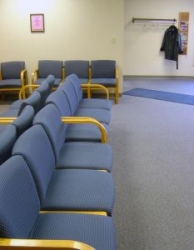
By now, it’s well known in the medical community that widespread health disparities exists in the United States when it comes to Americans of different races. Now, new findings published in JAMA Internal Medicine shows that minorities spend more time than their white counterparts waiting to see the doctor, the Washington Post reports.
Specifically, the study found that, on average, white patients spent 80 minutes waiting on or receiving care, compared with 99 minutes for black patients and 105 minutes for Latinos. (Interestingly, for patients across all racial and ethnic groups, the amount of face time a patient spent with a doctor was essentially the same.)

Researchers acknowledged that the differences in wait times could be accounted for by the reality that patients in different population groups sought care in various types of clinics. But scientists also said that either conscious or unconscious bias on the part of health care providers could be another factor.
In a comment about the report, Alexander Green, associate director of the disparities solution center at Massachusetts General Hospital, noted that wait times are something very subjective. “[I]t might seem justified in the mind of a provider or a staff member to have this person waiting a little bit longer: ‘I know this person better and I’ll squeeze them in first,’ or being concerned the visit is going to take longer,” Green said.








